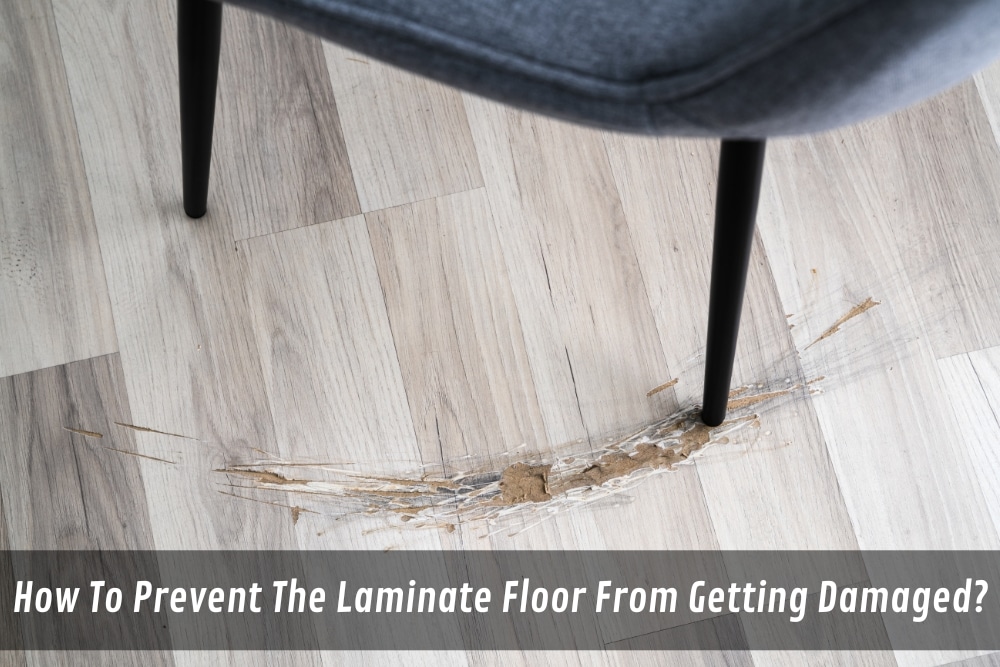How To Prevent The Laminate Floor From Getting Damaged?

If you’ve ever had to deal with a damaged laminate floor, you know how inconvenient and costly it can be to repair or replace. Compared to hardwood flooring, laminate flooring offers numerous advantages, such as affordability, durability, and low maintenance costs.
Although floating laminate floors are a popular choice due to their durability, affordability, and ease of maintenance, they are still susceptible to wear and tear, as well as accidents. Fortunately, there are several preventive measures you can take to safeguard your laminate flooring and prolong its lifespan. In this guide, we will explore some of the most effective ways to prevent damage to your laminate floor and maintain a beautiful home for years to come.
What causes damage to laminate flooring?
Here are some factors that can cause damage to laminate flooring:
-
Water damage
Exposure to excessive moisture can cause laminate flooring to warp, buckle, or delaminate. This can occur if there is a leak, a spill that isn’t promptly cleaned up, or if the flooring is installed in a high-moisture area like a bathroom. Additionally, water damage to the laminate floor can be caused by water seeping through the subfloor.
-
Wear layer damage
The wear layer is the protective coating on top of the flooring that provides durability and scratch resistance. If this layer is damaged or worn down, the flooring can be more susceptible to damage.
-
Excess glue
Improper installation or the use of too much adhesive can cause laminate planks to become stuck together or to the subfloor, making repairs difficult.
-
Damage to planks
Heavy furniture or other objects can scratch or dent, causing damage to individual planks.
-
Cleaning methods
Using harsh chemicals or abrasive tools can scratch or damage the surface of the flooring.
-
Hard wood flooring
It can be damaged by contact with hardwood flooring, which can cause scratches or gouges.
-
Improper installation
Poor installation can result in gaps or buckling, making the flooring vulnerable to damage.
-
Hybrid flooring
The use of hybrid flooring with laminate can cause damage if the two materials expand or contract at different rates.
If you need to repair damaged laminate flooring, you may be able to use a laminate flooring repair kit or replace individual planks. To do so, you’ll need a utility knife and a dust mop to clean the damaged area before beginning repairs. It’s important to allow the damaged area to completely dry before attempting any repairs.
What steps can you take to protect your laminate floor?
Here are some ways to protect your laminate flooring from damage:
- Preventing water damage
Avoid exposing laminate flooring to excess water by promptly cleaning up spills and using moisture barriers in water-prone areas.
- Follow manufacturer instructions
Always follow the manufacturer’s instructions for installation, cleaning, and maintenance to prevent damage and prolong the life of your flooring.
- Use floor protectors
Use furniture pads or felt tips on the legs of chairs and other furniture to prevent scratches and dents on the laminate surface.
- Use area rugs or floor mats
Use area rugs or floor mats in high-traffic areas or where spills are likely to occur to protect the flooring.
- Regular cleaning
Clean your laminate floors regularly. Use a dust mop or soft cloth to remove dust and dirt that can cause damage.
- Avoid harsh chemicals
Use natural cleaning agents or mild detergents to avoid using harsh chemicals. It can damage the protective layer of the laminate surface.
- Keep humidity levels in check
Maintain a humidity level to prevent excess moisture from causing damage to the flooring.
- Leave a 1/4-Inch Expansion Area
When installing laminate flooring, leave a 1/4-inch expansion area around the perimeter of the room to allow for natural movement of the flooring.
- Protect against winter degrees
During the winter season, use a fine-finish blade or blade guard. It protects the laminate surface from abrasive winter degrees.
- Fix floor gaps
Use a floor gap fixer or repair putty to fill in gaps between floorboards or individual planks to prevent future damage.
- Watch for excess moisture
Keep an eye on dampness issues to prevent excess moisture from damaging your laminate flooring.
- Use protective sealant
Consider using a protective sealant to add an extra layer of protection.
- Avoid excessive weight or pressure
Avoid placing heavy objects or furniture to prevent buckled floors or irreparable damage.
- Use slip-resistant solutions
Consider using anti-slip solutions, such as floor grips or slip-resistant mats, in areas where slippery flooring is a concern.
In summary, protecting your laminate flooring from damage is essential to prolonging its lifespan and keeping it looking beautiful. Preventative measures such as using floor coverings, fixing damaged boards promptly, and being mindful of water damage can help prevent irreversible damage to your floors. By taking care of your laminate flooring, you can enjoy these benefits for years to come. With proper installation, maintenance, and cleaning techniques, you can prevent damage and enjoy a beautiful, long-lasting floor that enhances the overall look and value of your home.
Contact Cosy Group today to find out how we can help you with your laminate flooring installation and maintenance.
